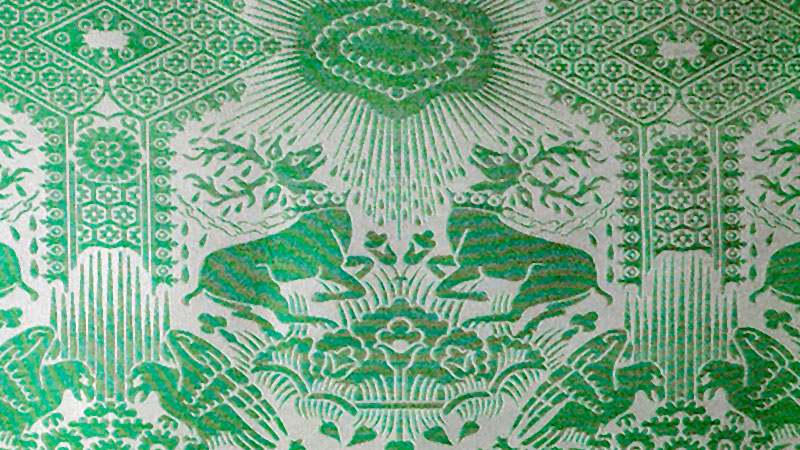The motif arranged in a network of hexagonal sections shows two tethered stags standing opposite to one another on a floral background. Above them is a band of cloud with a corona and two birds of prey opposite to one another. The individual sections are surrounded by wide ornamental bands with a floral pattern. The stag is an ancient symbol well-known in the Christian Church depicting the God loving soul or the soul of those who wish for calm and peace (documented in the Bible in Psalm 42, verse 1: “As the stag pants for flowing streams, so pants my soul for you, O God”. The stag already played an important role in the ecclesiastical robes of the 13th and 14th centuries. The oriental influence on pattern design at the time can be clearly seen in the fine imaginative design of the animal motifs and the type of ornaments chosen. In the Krefeld ecclesiastical textiles market of the 19th and early 20th centuries, the stag pattern was one of the most popular designs and was woven in every imaginable colour combination and weaving technique. The Hubert Gotzes silk weaving and ecclesiastical textiles factory produced splendid brocade, gold brocade and velvet cloth with this motif. Today the appropriate original point paper designs (design nos. 220, 170 and 320) and the Jacquard punch cards can be found in the museum’s archives. Therefore in principle it is still possible today to weave the stag pattern on one of our 100-year-old Jacquard handlooms. By purchasing this item you are not just acquiring a stylish, pure-silk product, you are also helping to preserve our treasure for future generations. We wish you much pleasure with your scarf and/or necktie.

